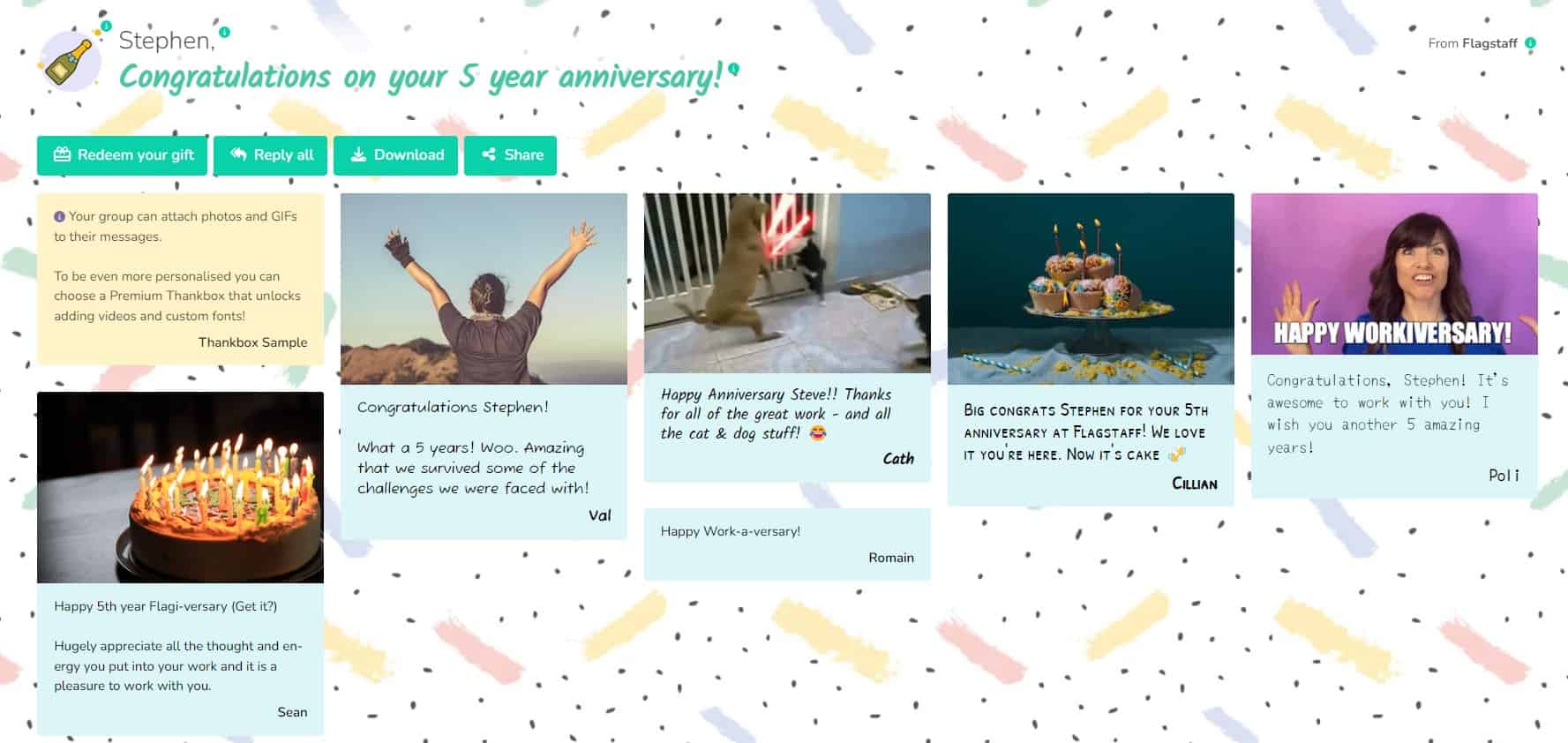Why Resourcing the Humans in Your Organisation Will Be Essential to its Survival


The growth of artificial intelligence (AI), the Covid-19 pandemic, and the accelerating trend towards globalisation have combined to usher in an epochal shift in working practices, arguably the most significant since the Industrial Revolution.
The traditional office model, where employees collaborate in close proximity, has given way to more atomised workforces, with individuals operating in isolation and communicating remotely. Machines are increasingly assuming roles previously performed by humans, transforming the nature of work itself.
While the economic advantages of these changes are evident, the repercussions on human relationships, integral to the fabric of labour relations, are profound and often unanticipated.
Governments, employers, trade unions, and other social and civic organisations now face the urgent task of preserving and fostering human connections to sustain creativity, cooperation, and collaboration in this evolving landscape.
The impact of AI on workforce atomisation
AI is no longer a distant prospect, it is actively reshaping industries and economies worldwide. With its capacity to emulate human intelligence, machine learning has the potential to revolutionise industries on an unparalleled scale.
From autonomous vehicles and smart cities to personalised healthcare and advanced automation in manufacturing, AI is already reshaping numerous sectors.
It holds the promise of unlocking solutions to complex challenges in areas such as climate change, disease diagnosis, and space exploration.
Already large language models, such as ChatGPT and its advanced counterparts, are altering the landscape of business operations, disrupting traditional roles.
It has set the stage for a future where the adoption of AI technologies may create a hierarchy among businesses, widening the gap between those harnessing AI's power and those not. While this technology offers remarkable opportunities, it also presents substantial challenges for society and workforces.
The role of globalisation in the transformation
Simultaneously, the ongoing shift towards globalisation has further amplified the disruption of traditional working structures.
The ability to collaborate across borders has opened up new possibilities, enabling companies to assemble teams with members spanning different time zones and continents.
This physical separation of individuals raises challenges in maintaining the interpersonal connections that were once fostered through shared office spaces.
Colleagues who previously worked side-by-side in the same office are increasingly being replaced with workforces that are dispersed across different countries and continents, in which people can form professional relationships without ever meeting face-to-face.
While this has undoubtedly increased efficiency and flexibility, it has also disrupted the social fabric of the workplace, impacting the spontaneous interactions that often fuel creativity and collaboration.

The acceleration of remote and hybrid working
The Covid-19 pandemic catalysed the widespread adoption of remote working. Lockdowns and safety concerns prompted the rapid implementation of digital communication tools, leading to a paradigm shift in how work is conducted.
Some reports claim that, since the end of the lockdown, more people than ever are working from home while others suggest there is a growing shift toward returning to the office.
Similarly, while some reports claim remote working makes people happier and more productive in their jobs, others say productivity is lower because workers miss the social interaction of office working.
It is true that most workers have taken positively to home working, particularly those who face long and tiring commutes to the office.
It is also the case that, while some employers have welcomed remote working as a way of reducing the overhead costs of employing people in expensive, city centre offices, more are now encouraging at least some of their staff to attend in person at least some of the time.
This is the point at which opinions start to diverge. Despite efforts to bring employees back to the traditional office setting, businesses are facing unexpected hurdles.
Working remotely has altered the way our brain functions
The controlled, quiet environment of home offices conditioned us to work in silence, away from the usual office distractions. This shift has made reintegration into the traditional office challenging.
Edward Brown, co-founder of the Cohen Brown Management Group found that office workers lose between three and five hours of productive time every day due to unwanted, unnecessary, and unproductive interruptions, with 93% of workers reporting being often interrupted at work.
Our brains exhibit neuroplasticity, adapting to the environment we work in. Remote work conditions our brains for a quieter setting, allowing us to filter out distractions and focus on tasks. However, this adaptation comes at a cost as our ability to handle the noise and chaos of the office weakens.
The return to the office after months of remote work revealed a steady decrease in productivity. According to the study. The once-familiar sounds of ringing phones, office chatter, and clattering keyboards have become significant distractions, disrupting focus, and hindering efficiency.
Other studies have emphasised the negative impact of noise distractions in open office layouts. Reviews of numerous studies highlight lower rates of concentration and focus in open offices, with employees in cubicles experiencing more interruptions. Unwanted interruptions contribute to a loss of productive time, raising concerns about employee satisfaction and well-being.

Forcing employees back into the office without addressing noise and distractions is akin to expecting a marathon runner to train in a swimming pool. The question arises: Is it fair to place the burden of adaptation solely on employees, especially considering the negative impact on productivity over the last quarters?
The suggestion that more office time is the solution to recondition our brains raises questions about its feasibility. Is it reasonable to expect employees to "exercise" their brains in an inherently distracting environment? This approach neglects the fact that not all work is the same, and forcing all tasks into a noisy environment can hinder productivity.
Addressing the challenge of transitioning back to the office requires a nuanced approach. Simply advocating for more office time overlooks the diverse nature of work tasks. Some tasks demand deep concentration best performed in a quiet environment, while others benefit from the energy of a bustling office.
Recognising the challenges posed by office noise, a flexible hybrid work model emerges as a solution. This model blends remote and in-office work, allowing employees to focus on individual tasks at home and reserve the office for collaboration, conversations, mentoring, and socialising.
The hybrid model respects the neuroplasticity of our brains developed during remote work, leveraging it to enhance productivity. It acknowledges the value of in-person interactions while providing flexibility for employees to choose their work location based on the nature of their tasks.
The flexible hybrid model proves to be adaptable to changing circumstances, ensuring continuity and productivity in various scenarios. By offering employees the choice to work from home or the office, companies can create a resilient and future-proof work environment.
The future of work lies in finding the right balance between silence and sound. The hybrid model allows for a nuanced approach, where focused work and collaboration each have their designated space. Embracing this approach enables employers to maximise productivity, enhance employee satisfaction, and cultivate a resilient work culture.
Home working is exacerbating workplace inequalities
For all the positives associated with remote working, there is equal and opposite evidence pointing to its disadvantages.
In 2019, only 4.7% of the UK workforce did some work from home but that figure jumped to 46.6% in April 2020, following the first Covid lockdown, according to the Wales Institute of Social and Economic Research and Data.
However, recent data published by the UK Office for National Statistics (ONS) shows that your ability to work from home is related to how much you earn. It revealed that workers on lower incomes are up to five times less likely to be able to work remotely than those who earn more.
The study found that only 6% of lower income households reported to be working from home between 27 April and 8 May 2022, compared with 12% of middle wage-earners, and 23% for those earning £40,000 or more.
The ONS study also showed that one’s ability to work from home varies by industry with greater opportunities in professional, scientific, and technical activities, as well as information and communication compared with hospitality, catering and construction, which have the fewest.
These findings suggest that, while the predicted mass return to office working has failed to materialise, with significant numbers continuing to work from home, the headline figures mask a divide.
They suggest you are more likely to be offered the opportunity to work from home if you are in a senior position in a company.
It is obvious that home working is the preserve of office workers. Those who work manually, particularly with equipment, are inevitably required to work on site.
Remote working is included in employment contracts
A recent study of software developers found that flexibility remains a primary factor for job retention or job seeking. Another survey reveals that one in three developers would consider quitting if denied the option to work from home.
This sentiment extends beyond the realm of developers, with almost half of employees expressing a willingness to quit if compelled to return to the office full-time. Moreover, most workers would trade an office-only job for a remote one, even if it means accepting a pay cut, as indicated by a survey of over 8,400 US employees.
Surprisingly, 17% of workers are willing to sacrifice 20% of their pay packet to work remotely, and 10% said they were open to surrendering more than 20%, despite the prevailing cost of living crisis.
However, there exists a stark contrast between the views of CEOs and employees. A KPMG study involving over 1,300 global CEOs found that 64% believe everyone will be back to working from the office by 2026. Furthermore, 87% of CEOs express a preference for rewarding in-office employees with favourable assignments, raises, or promotions.

A notable disparity exists between the perceived benefits of on-site work by organisations and CEOs and the reported benefits by employees. McKinsey and Company's 2023 Women in the Workplace report reveals that organisational culture, considered a key benefit by 77% of companies, is acknowledged by only 39% of men and 34% of women working on-site. This disparity is exacerbated by gender differences in accessing on-site benefits.
The debate over remote work often centres on productivity, but defining and measuring productivity is complex. Studies vary in methodology, utilising employee time monitoring or self-reported assessments. Hybrid work arrangements, combining office and remote work, add further complexity to the productivity discussion.
Contradictory findings emerge from numerous studies on remote and hybrid work. A Stanford study suggests a 10% drop in productivity for fully remote work but no impact on productivity for hybrid working. However, the study overlooks cost savings associated with remote-first approaches and their positive effects on recruitment and retention.
A working paper by the US National Bureau of Economic Research argues that remote workers are less productive, but critics point out its failure to consider factors like commercial property costs, the impact of enforced office working on recruitment and retention, and issues of accessibility and diversity.
Notably, stakeholders advocating a return to office working, such as commercial landlords, have vested interests in the return to commercial properties, despite data suggesting that daily in-person interaction is not essential for innovative and meaningful work.
Shifting the focus from productivity to factors like accessibility, diversity, and happiness reveals their significant impact.
US business magazine Forbes, reports that workers who exclusively work from home are 20% happier on average, with a strong correlation between work happiness and overall happiness.
Happiness at work has tangible benefits, raising sales by 37%, productivity by 31%, and task accuracy by 19%, as emphasised by business psychologist Dr Camille Preston and author Sean Achor.
Considering diversity, equity, and inclusion, the impact of enforcing office working on tech industry diversity is evident, with layoffs disproportionately affecting women and people of colour. Research, including a report by McKinsey and Co, indicates that women derive fewer benefits from on-site work than men.
Harvard Business School professor Prithwiraj Choudhury warns that forcing people back to the office risks losing top performers and diversity, particularly impacting women who resign at higher rates than men. Women's disproportionate responsibility for household work, especially childcare, exacerbates the gender gap.
It also negatively affects workers with disabilities, including neurodivergent individuals, as highlighted by advocacy groups. Removing the option to work remotely diminishes workplace accessibility and diversity, making it less appealing to potential employees.
Preserving human relationships in the digital era
In the evolving landscape of modern workplaces, where remote and hybrid work models are becoming increasingly prevalent, maintaining human connections, and fostering a sense of community among employees poses a unique challenge.
Employers can play a pivotal role in fostering a sense of connection among remote workers.
Here are some steps they can take to encourage and forge greater human contact and relationships:
Virtual team-building activities: Organize regular virtual team-building activities to recreate the camaraderie of in-person interactions. This could include virtual games, quizzes, or collaborative projects.
Scheduled video conferencing: Prioritize face-to-face communication through video conferencing platforms. Regular video calls can help bridge the emotional gap created by physical separation.

Digital collaboration platforms: Implement digital collaboration tools that facilitate real-time communication and project management. These platforms can enhance teamwork and provide a shared space for employees to collaborate seamlessly.
Flexible work hours: Allow flexible work hours to accommodate different time zones. This ensures that employees can connect with colleagues when it is most convenient for them, promoting inclusivity.
Mentorship programs: Establish mentorship programs that pair remote employees with experienced colleagues. This not only facilitates knowledge transfer but also nurtures meaningful professional relationships.
Virtual coffee breaks: Encourage informal virtual coffee breaks where employees can discuss non-work-related topics. These casual interactions mimic the spontaneous conversations that occur in physical office spaces.
Wellbeing initiatives: Prioritize employee well-being by implementing initiatives that address mental health and work-life balance. A healthy and content workforce is more likely to engage in positive relationships.

Cross-functional projects: Create opportunities for employees from different departments to collaborate on cross-functional projects. This fosters a sense of unity and understanding across diverse teams.
Recognition programs: Implement recognition programs to acknowledge and celebrate individual and team achievements. Positive reinforcement enhances morale and strengthens interpersonal bonds.
Open communication channels: Establish open and transparent communication channels to address concerns and foster a culture of trust. Remote employees should feel heard and supported, reinforcing a sense of belonging.
Bringing colleagues closer together
Online gifting platforms like Thankbox are emerging as crucial tools in bridging the gap created by physical distance, contributing significantly to the retention of human connections within organisations.
One of the primary ways Thankbox enhances human connections is by facilitating employee appreciation. In traditional office settings, recognising and celebrating milestones such as retirements, birthdays, or job changes often involve physical gatherings and shared experiences.

With the rise of remote work, these opportunities for connection have become more limited. Thankbox steps in to make workplaces brighter by providing a platform for teams to celebrate each other, ensuring that individuals feel valued and appreciated, even when miles apart.
The platform's compatibility with hybrid and remote work models is a key factor in its success. As teams become more dispersed, the need for tools that transcend physical boundaries becomes crucial.
Thankbox enables colleagues to express their sentiments and contribute to collective gifts regardless of their location. The convenience offered by this online platform supports flexibility, diversity, and inclusivity, fostering a sense of unity among team members despite the geographical dispersion.

Personalisation plays a vital role in human connection, and Thankbox recognises this by allowing customers to customise their gifts. Users can design their own Thankbox, adding personal touches such as photos, videos, and heartfelt messages. This not only makes the gifting experience more meaningful but also reinforces the emotional connection between team members.
Organising group gifts is straight forward with Thankbox, addressing another common challenge in remote workplaces. The platform combines an e-card and gift in one, eliminating the need for multiple transactions or tracking down physical cards circulating within the office. The simplicity and efficiency of the process make it accessible to everyone, with no account required and the ability to split costs seamlessly.
The freedom to choose how to spend the collected funds further contributes to the appeal of Thankbox. By removing the pressure of aligning on gift ideas, the platform empowers recipients to select a gift that truly resonates with them.
With a vast array of options, including gift cards from over 700 retailers or cash in the form of an online debit card, Thankbox ensures that each recipient receives a gift they genuinely appreciate.
Beyond fostering human connections, Thankbox is committed to sustainability. The platform plants a tree for every 10th sale, making it a carbon-negative company. As organisations increasingly focus on reducing their environmental impact, Thankbox provides a sustainable alternative to traditional greetings cards, eliminating paper and plastic waste.
Conclusion
The intersection of AI, the Covid-19 pandemic, and globalization has propelled the workforce into uncharted territory. The atomization of work, while bringing economic benefits, poses challenges to the essential human relationships that underpin creativity and collaboration.
Governments, employers, trade unions, and organizations must actively address these challenges to ensure that the future of work is not devoid of the meaningful human connections that define a thriving workplace.
By implementing the suggested steps, employers can navigate this evolving landscape and forge a balance that embraces the advantages of technological advancements while preserving the richness of human interactions in the world of work.
While some argue that the return to the traditional office is necessary to recondition our brains and boost productivity, others contend that forcing employees back without addressing the challenges posed by office noise is counterproductive.
The emergence of a flexible hybrid work model appears as a promising solution, acknowledging the neuroplasticity developed during remote work while providing space for collaboration and socialising in the office. This nuanced approach ensures adaptability to changing circumstances, fostering a resilient work culture that maximises productivity and employee satisfaction.
On the other side, the drawbacks of remote work, particularly its exacerbation of workplace inequalities, cannot be ignored. The ONS study reveals a stark divide in the ability to work from home based on income and industry, emphasising that remote work is more accessible to those in senior positions and certain sectors.
As discussions around the future of work continue, it is crucial to address these disparities and ensure that remote work opportunities are inclusive. Balancing the benefits of remote work with considerations of accessibility, diversity, and happiness becomes imperative, and the adoption of a flexible hybrid model stands out as a step toward creating a work environment that accommodates various needs and circumstances.
Online gifting platforms like Thankbox can play a pivotal role in retaining human connections within organisations, especially in the face of remote working trends. By facilitating appreciation, personalisation, and sustainable practices, Thankbox emerges as a versatile solution that aligns with the evolving needs of modern workplaces, making meaningful connections possible in the digital age.





